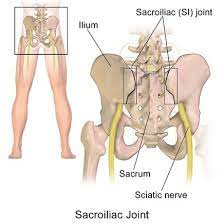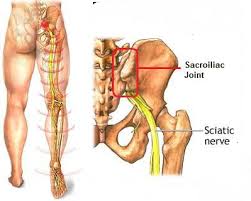What is
Sacroiliac Joint Pain
The sacroiliac joint (SI joint) is the joint bridging the lowest segment of the spinal column (sacrum) to the bones of the pelvis (ilium). The integrity of the sacroiliac joint depends on strong ligaments that encase and cover the joint, both the front and back. These ligaments compress and stabilize the joint, keeping it together and limiting its’ motion. These joints support the upper body when we are standing. After time, the SI joint can develop arthritis and become painful, particularly when walking and climbing stairs.
What are the Symptoms of Sacroiliac Joint Pain?
Pain originating in the sacroiliac joint is generally in the lower back, buttocks and thighs.

How do you diagnose Sacroiliac Joint Pain?

In order to diagnose the sacroiliac joint as the pain generator, your physician will typically start with a history and a physical examination. During the physical examination, your physician may try to determine if the sacroiliac joint is the cause of pain through movement of the joint. If this joint movement recreates the pain, the SI joint may be the cause of the pain.
Your physician may also use X-rays, CT-scan or MRI to help diagnose the sacroiliac joint. It is also important to remember that more than one condition (like a disc problem) can co-exist with sacroiliac joint disorders. This means that even if the sacroiliac problem is addressed, pain may still be present in the area. Your doctor should discuss this with you.
Finally, your physician may request sacroiliac joint injections as a diagnostic test. Sacroiliac joint injections involve injecting a numbing medication into the sacroiliac joint. If the injection temporarily alleviates your symptoms, then your sacroiliac joint may be the likely source of your pain.
These injections are not done in the office but are done in a fluoroscopic suite. The response to the injection may last for hours, days or weeks and depends on the disease process. What is looked for is a temporary resolution of your pain complaint that brought you to the doctor. This temporary resolution has to be dramatic at 70% pain relief or more.
Treatment may involve physical therapy and repeated SI joint injections to manage the pain. For patients who are no longer responding to conservative care, an SI joint fusion may be suggested as a minimally invasive surgical option.
What are the Treatments for Sacroiliac Joint Pain?

Request An APPOITMENT
Fell free to contact us with any questions or concern regarding Back/Neck pain.